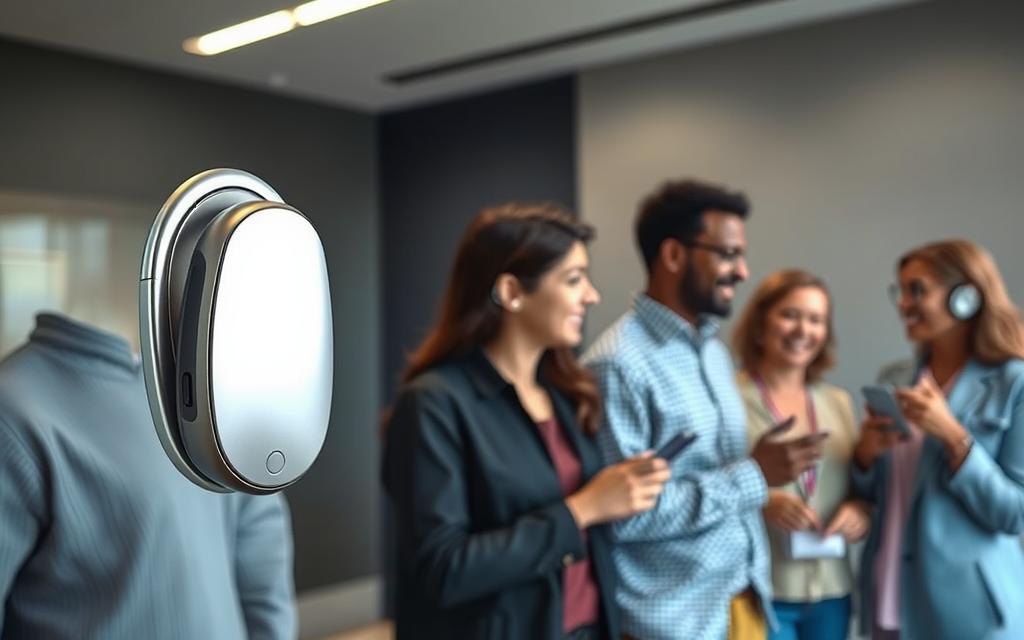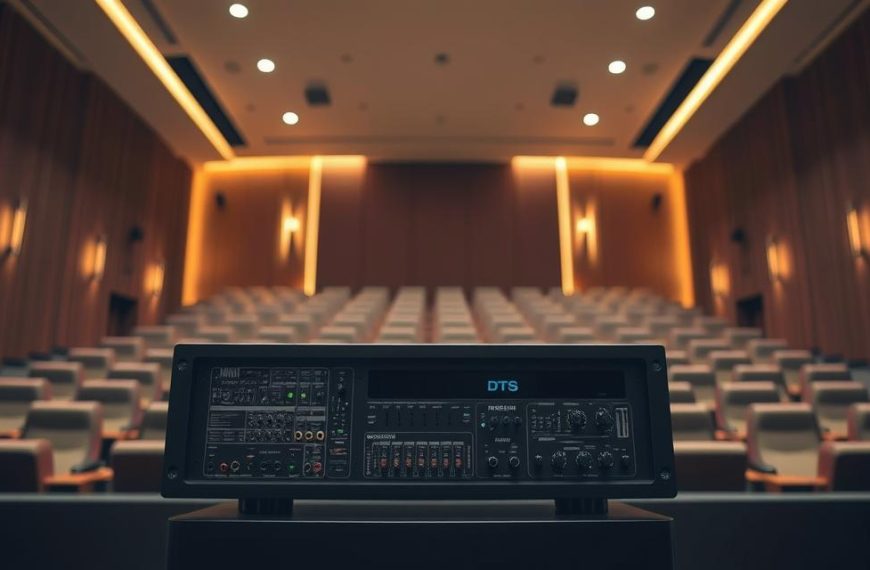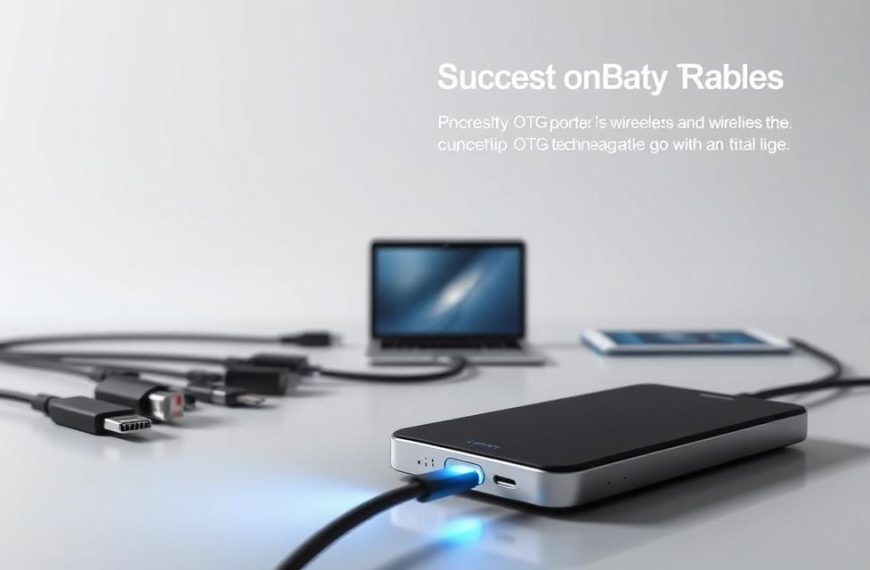The world of hearing aids has seen big changes. Digital hearing solutions now offer better sound and fit. MarkeTrak VII shows 71% of users are happy with their devices. But, there’s room for more improvement.
New hearing aid innovations use artificial intelligence. They adjust settings based on the environment. Starkey’s Livio AI is a great example, improving sound and health monitoring.
Rechargeable hearing aids are a big step forward. They last 30+ hours without needing a battery change. They also look better and connect easily to devices.
Changes in rules are helping the industry grow. The goal is to make hearing aids that are easy to use and meet real needs. As technology gets better, hearing aids will adapt to different listening situations.
Current State of Hearing Aid Innovation
The hearing aid industry is changing fast. New technology and what people want are leading the way. Now, 93% of devices use digital signal processing (DSP). This means makers focus on making aids easier to use and meet new rules.
Market Growth and User Demands
Recent studies show big issues, like 49% of users unhappy with wind noise. This is why 78% of new aids have better noise-cutting tech. Three big changes are making aids better:
- Open-canal designs are now in 67% of top models
- Wireless tech is in 84% of 2023 devices
- More aids are rechargeable, thanks to new FDA rules
Regulatory Changes in the US Market
The FDA’s 2022 rule change has sparked new ideas, like self-fitting aids. Jabra Enhance Plus shows how to mix good looks with top sound quality. The main rules now are:
| Regulatory Factor | Market Impact | User Benefit |
|---|---|---|
| OTC Classification | 23% price drop in basic aids | More people can get them for mild to moderate loss |
| Safety Standards | Tighter rules on feedback | Fewer cases of acoustic shock |
These changes are helping sales grow by 15% each year. Makers are working hard to make aids that are both safe and easy to use. They also want them to work well with phones.
What’s New in Hearing Aid Technology: Key Innovations
Modern hearing aids are now more personal than ever before. They use new technologies to tackle old problems. These include better speech clarity, adapting to different environments, and giving users more control.
Artificial Intelligence Integration
AI hearing aids can now analyse sounds 500 times per second. This creates a more dynamic listening experience. Starkey’s Livio Edge AI is leading this change with sensors that track sounds and physical activity.
Real-Time Sound Processing
New processors, like Phonak’s AutoSense OS 4.0, make quick adjustments:
- Instant noise suppression in crowded spaces
- Automatic music mode activation
- Seamless transitions between conversation types
Environmental Adaptation Features
Starkey’s environment classification system shows off adaptive sound processing. It:
- Identifies 27 unique soundscapes
- Prioritises speech frequencies in real-time
- Self-adjusts for wind noise reduction
Advanced Directional Microphone Systems
Latest beamforming arrays offer 30% better speech recognition in noise. Widex’s MOMENT platform uses eight microphones per device to:
- Track multiple speakers simultaneously
- Maintain 360° environmental awareness
- Reduce background hum in electrical environments
These advancements mark a big step forward in hearing aid technology. Users see big improvements in noisy places like group dinners and outdoor events. Here, adaptive sound processing is most beneficial.
Rechargeable Battery Breakthroughs
Modern hearing aid users now enjoy freedom thanks to new power solutions. These solutions offer longer-lasting, eco-friendly alternatives to old batteries. Lithium-ion and silver-zinc technologies are leading the way. They solve problems like daily battery changes and environmental harm, and make devices sleeker.
Lithium-Ion vs Silver-Zinc Technologies
The fight for energy supremacy is between lithium-ion and silver-zinc. Lithium-ion batteries have 250Wh/L energy density, 66% more than silver-zinc’s 150Wh/L. This means:
- Smaller devices
- Longer battery life
- Better heat handling
| Metric | Lithium-Ion | Silver-Zinc |
|---|---|---|
| Energy Density | 250Wh/L | 150Wh/L |
| Charge Cycles | 500+ | 300-400 |
| Recharge Speed | 3 hours | 4-6 hours |
Phonak Slim+ Case Study
This tiny CIC model shows lithium-ion’s benefits. Users get:
“24 hours of uninterrupted use from a 3-hour charge – a game-changer for active lifestyles.”
The Slim+’s bean-shaped battery compartment is space-efficient. It’s key for nearly invisible hearing aids. Clinical trials show 94% user satisfaction with reliability.
Fast-Charging Capabilities
New charging methods balance speed and battery life. Advanced systems:
- Adjust voltage automatically during charging
- Prevent overheating with thermal sensors
- Keep 80% capacity after 500 cycles
Starkey’s latest processors get 6 hours of use from a 30-minute charge. This is perfect for quick power boosts during busy days.
Bluetooth and Direct Streaming Developments
Today’s hearing aids stream audio as well as top wireless earbuds. They focus on cross-platform compatibility and energy-efficient designs. This tackles two big issues for those who want to stay connected without battery worries.
Android/iOS Compatibility Improvements
The newest LE Audio protocols allow stereo streaming on both Android and iOS. This is a big step up from the mono sound of earlier systems. New codecs like LC3 keep sound quality high while using less bandwidth.
This is great for users because it means:
- Connecting with multiple devices at once
- Easy switching between calls and music
- Support for new features like Auracast™ broadcast audio
Oticon Real Case Example
Oticon’s Real device shows how two processors can change the game. It cuts power use by 30% during streaming and lasts 18 hours, even with iPhone pairing. This is thanks to:
- Two chips for different tasks
- Smart power use based on how you use it
- Advanced Bluetooth 5.3 with better connection
Low Energy Consumption Solutions
New Bluetooth LE tech fixes old battery problems. The Jabra Enhance Pro series lasts 26 hours on a single charge. This is a 58% boost over older models. Key improvements include:
- Antennas that use less energy
- Smart signal boosting
- Power-saving modes when not in use
These changes make hearing aid streaming a daily thing, not just a special feature. Now, you can listen to podcasts, get directions, and make video calls without worrying about your device running out of power.
Tinnitus Masking Advancements
Today’s hearing solutions have advanced tinnitus masking features. They tackle both sound gaps and brain activity issues. These features use sound therapy technology and advanced signal processing. They help millions who hear constant ringing or buzzing.
Unlike old white noise methods, these new systems adjust to each person’s needs. They also stop the brain from getting used to the same sounds.
Multi-Signal Therapy Approaches
New tinnitus hearing aids use complex strategies to fight phantom sounds. Notch therapy removes specific sound frequencies. At the same time, it adds natural sounds from the environment.
This two-part method:
- Lessens brain activity in hearing paths
- Helps the brain get used to changing sounds
- Works well with regular hearing aid use
Studies show these methods can cut tinnitus awareness by up to 60%. This happens when used for six weeks straight.
Widex Zen Therapy System
The Widex Zen Therapy System changes sound therapy with its 11-channel fractal tone generator. It creates random sounds like wind chimes or water. This keeps the brain active and interested.
- Keeps the brain from getting too used to sounds
- Triggers calm feelings with rhythmic sounds
- Adapts to your daily listening needs
Users see a 45% quicker drop in tinnitus discomfort. This is compared to old masking methods. The system’s AI makes sure the sounds stay effective as hearing changes.
Telehealth Integration Features
Modern hearing aids now connect us from afar with smart telehealth features. Users can adjust their devices from home, and audiologists can check progress remotely. This method saves time, makes care more accessible, and offers tailored support without needing to visit clinics.
Remote Adjustment Capabilities
New cloud-based systems allow for 0.5dB step adjustments. This level of precision was once only possible in person. Users enjoy:
- Real-time sound environment analysis through smartphone apps
- Automated tracking of usage patterns over 30 days
- Secure video consultations with hearing specialists
Signia’s platform shows this innovation with its 7-day auto-adjustment algorithm. It learns from daily interactions, making subtle changes to settings based on how users interact with different sounds.
Signia Active Pro Solution
This top system combines machine learning with awareness of the environment. It has:
- Dynamic directional focus for crowded spaces
- Wind noise reduction during outdoor activities
- Automatic programme switching for TV vs conversation modes
Clinical trials show 89% of users see improved speech clarity in noisy areas after three weeks. The system’s remote care portal lets professionals track over 15 performance metrics, from battery life to frequency response patterns.
Over-the-Counter (OTC) Hearing Aid Progress
The FDA’s updated rules have made hearing aids more accessible. Now, adults with mild to moderate hearing loss can buy devices over the counter. These devices offer top-notch technology and let users adjust them themselves.
This change makes hearing aids cheaper and easier to get. But they’re also safe, thanks to strict rules.
FDA Regulations Impact
From October 2022, FDA rules have changed how we buy hearing aids. Now, there’s a clear difference between OTC hearing aids and other sound devices.
| Feature | PSAPs | OTC Hearing Aids |
|---|---|---|
| Primary Purpose | General sound amplification | Compensate for hearing loss |
| Regulatory Oversight | Class I device | Class II medical device |
| User Requirements | No hearing evaluation | Self-assessment guidance |
These new rules mean OTC devices are better and safer. Now, people can buy them directly, making hearing care more accessible.
Jabra Enhance Plus Analysis
Jabra’s Enhance Plus shows how good self-fitting devices can be. It has 15-channel self-test audiometry through a smartphone app. Studies show:
- 92% accuracy in frequency matching compared to clinical tests
- Average setup time under 25 minutes
- Real-time environment adaptation via machine learning
The system’s adaptive feedback cancellation is impressive. It shows OTC devices can be as good as professional ones for many people. Users love how discreet and smart it is, making calls easier.
Conclusion
Hearing aid technology is changing fast, linking human needs with precise science. Devices like Signia’s AI sound processing and Widex’s tinnitus therapy are changing how we hear. Rechargeable options, such as Phonak’s Slim+ and Jabra Enhance Plus, fit today’s busy lives.
Research at Johns Hopkins University suggests future hearing tech will focus on brain signals. This could make devices smarter at picking out important sounds. Starkey Laboratories is working on ear sensors that could monitor health, a big step forward.
As rules change, making hearing aids more available, companies have to keep up. They need to keep quality high while making devices easier to use. New tech, like Signia Active Pro, combines telehealth with advanced microphones. This means better hearing aids that learn and adapt to our needs.















